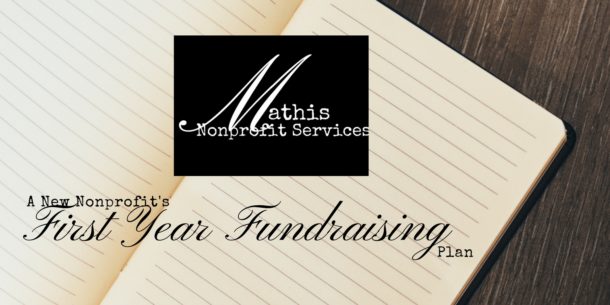I remember working for a large nonprofit and wishing I had a few clones. I would fantasize about what I would give each clone to do and what I would get to work on. Those were the times when I was so busy that I felt out of control. I didn’t like that feeling.
I want to share with you some fundraising productivity hacks I have learned over the years. They may surprise you. They will definitely help with that overwhelming and out of control feeling you have about your to-do list.
- Establish a routine with small fundraising tasks.
The biggest fundraising successes come from small tasks that build over time. Consistency builds these successes the fastest. The best way to build that consistency is to put into practice daily, weekly, and monthly routines that complete those tasks.
What tasks am I talking about? Writing general notes of gratitude to donors and volunteers. Thank you letters (called acknowledgment letters) to someone who has just donated. Contacting people close to you to ask for donations. If you are a member of the Facebook group, At the Top: Small Nonprofit Leaders, you will see every Friday a list of fundraising to-do’s that you can schedule each week.
2. Delegate Tasks
Decide what your “sweet” spot tasks are. What fundraising tasks do you do well? What tasks do you really enjoy? What are your strengths? These are the tasks you need to be working on. Eliminate or delegate the rest. When you delegate these tasks, use your Board. Are you starting to understand how important the Board is? Give the list of fundraising tasks that you want to delegate and ask your Board who will take the rest. Be firm.
Another option is to contact a local college to see if there are student intern programs where you can set up an internship. Internships can be paid or unpaid. If they are unpaid, they will need information from you for course credit.
3. Organize Your To-Do’s into one list.
Many of the Founders I work with have day jobs and are getting their nonprofit off the ground in their spare time. So, they have work to-do’s, home to-do’s, and nonprofit to-do’s. Usually, they are separate lists. Compartmentalizing may not be the best way to keep up with your to-do lists. By using Trello or Asana, you can organize those to-do’s to help you manage your time better.
4. Batch items on your to-do list.
Make time to do like things at one long sitting. Do you have a list of phone calls to make? Schedule 30 minutes with yourself to call everyone on your list. Do you have social media posts to schedule? Take an hour or two and get a month’s worth scheduled.
Batching items, especially ones that require the same skills, software, or focus, allows you to get in the zone of creating that item and using your time wisely.
5. Time Block a couple of hours at a time.
A digital calendar is more visual if you are a visual person. I use a paper planner and I’m able to use time blocking. The key to time blocking is to schedule an hour or two (or the whole afternoon) for your batch items and protect that time on your calendar. Maybe you need monthly thank you letters. Taking one Saturday afternoon to write a year’s worth will save you days of time over the course of the year. We’ll talk more about a way to batch, deeper in the next tip.
*If you would like to use the Ful Focus Planner like me, here is a code for $10 off your first order.
6. Use an Ideal Week
An ideal week is a concept I learned from Michael Hyatt. He goes into more detail about the ideal week here. Basically, you decide what an ideal week looks like for you with batching in mind and you write it out. Then, you do your best to stick to the ideal week. You won’t have an ideal week every week and there are some months no week will come close. For example, by scheduling meetings on one day instead of two or three, you can be more productive because your concentration isn’t broken or you haven’t started a task just to have to run to another meeting.
7. Break Down Your Projects into Smaller Steps.
You won’t be so overwhelmed if you take your big projects and list out all the steps that need to be done to accomplish the project. My friend Maryn Boess of Grants Magic U has a great way to do this. Divide a piece of paper up into three columns. On the left-hand column, write where you are in relation to your project. List what you already have done and what’s in the works in the coming week. On the far right-hand column, write where you want to go. What is your completed project? What does it look like? I like to add how it makes me feel to accomplish it because it gives me motivation. In the center column, write everything that needs to happen to fill the gap between where you are and where you want to be. Now go back and put those to-dos into groups that make sense. An example, you are planning an event and one to-do you have is to book the venue. Smaller tasks may be to research venues and costs in your area before booking.
8. Use a Top 3 Priority List for the Week and the Day
Once you have your project to-do’s in tip 7, list out your bigger to-do’s (the ones that have a few steps to complete) and the dates you need to have them completed by. These larger to-do’s will be your weekly big three. If you are planning an event, setting a first committee meeting is a major task that needs to be done. So week one, one of your big weekly three is to decide on committee members and schedule the first meeting for next week. Your Monday big three will consist of making a list of those you want on the committee. One of your Tuesday big three is making the phone calls to ask people if they want to join the committee. One of your Wednesday big three is deciding on a day and place to meet. On Thursday, one of your big three is to notify everyone of the meeting.
9. Make sure you have small tasks on your list that you can quickly mark off
I love crossing off things on my list. It’s so gratifying. Sometimes, I do something not even on my list or in my priorities just to be able to write it down in my planner and mark it off. Yes, doing the activity was probably a time waster but it felt good to check it off. Why not build some of those small tasks that can take a few minutes into every day so you can do what I do without wasting time?
10. Say No
Say no to those fundraising activities that require a lot of time for very little return. These activities have no place on your list of to-do’s and are not a good use of your time and organizational resources.
Systems and processes are really the keys to fundraising productivity. In case you missed it, almost all of what I told you about was a system or process. Getting your personal systems and processes in place can set you up for success. Fundraising is an infinite game we play and isn’t a get funding quick scheme. You have to put daily effort into raising funds for your organization.


 Most nonprofit leaders lay awake at night trying to figure out how to fund their mission.
Hi! I'm Alesha.
I teach sustainable fundraising in a way that they can take action today so they can serve their clients.
I can help you move from just getting started funding your new nonprofit to gaining confidence in your fundraising and building relationships to knowing what works for your organization and looking at the infinite game when it comes to funding. I’ve worked with nonprofit Founders and written the book I HAVE MY 501(C)3! NOW WHAT?!? Your Blueprint to Starting Your Nonprofit Without Being the Sole Funder that lays the foundations for funding in a new nonprofit.
I’ve worked in Development (Fundraising) Departments in large organizations and I know the no cost, low-cost methods they use to bring in funding. I bring those sound strategies to the nonprofits I serve.
Most nonprofit leaders lay awake at night trying to figure out how to fund their mission.
Hi! I'm Alesha.
I teach sustainable fundraising in a way that they can take action today so they can serve their clients.
I can help you move from just getting started funding your new nonprofit to gaining confidence in your fundraising and building relationships to knowing what works for your organization and looking at the infinite game when it comes to funding. I’ve worked with nonprofit Founders and written the book I HAVE MY 501(C)3! NOW WHAT?!? Your Blueprint to Starting Your Nonprofit Without Being the Sole Funder that lays the foundations for funding in a new nonprofit.
I’ve worked in Development (Fundraising) Departments in large organizations and I know the no cost, low-cost methods they use to bring in funding. I bring those sound strategies to the nonprofits I serve.